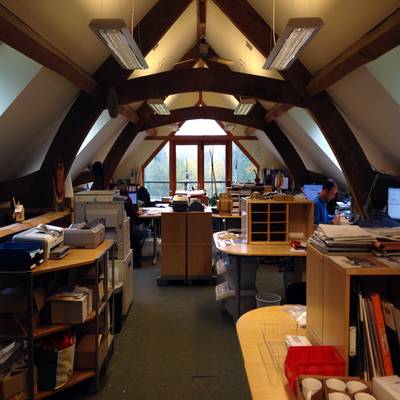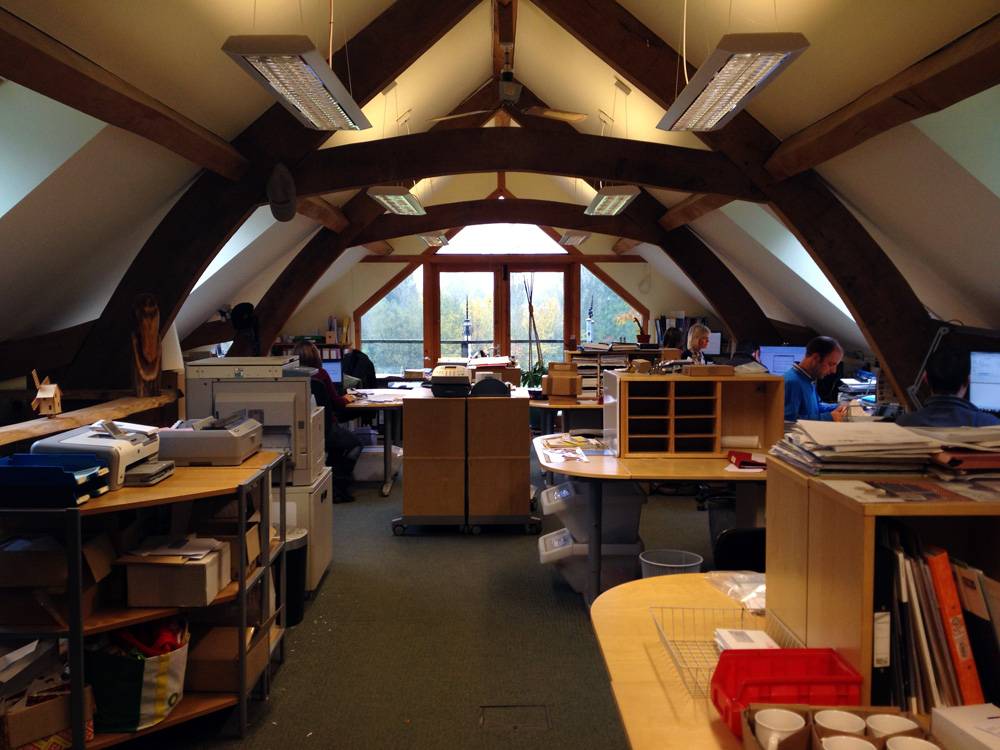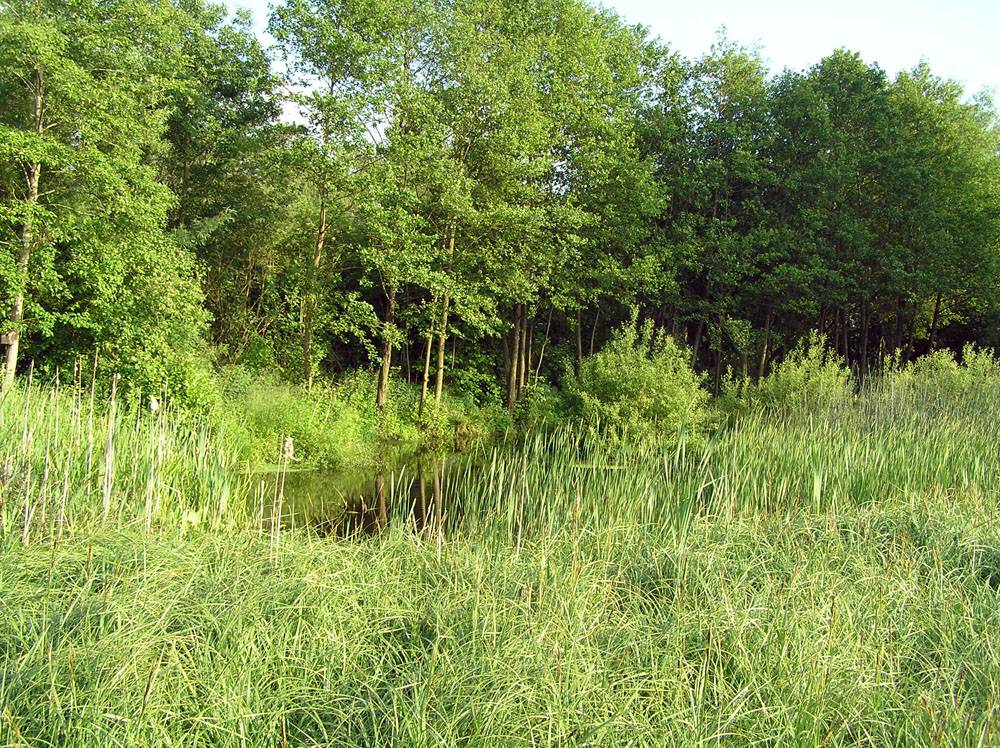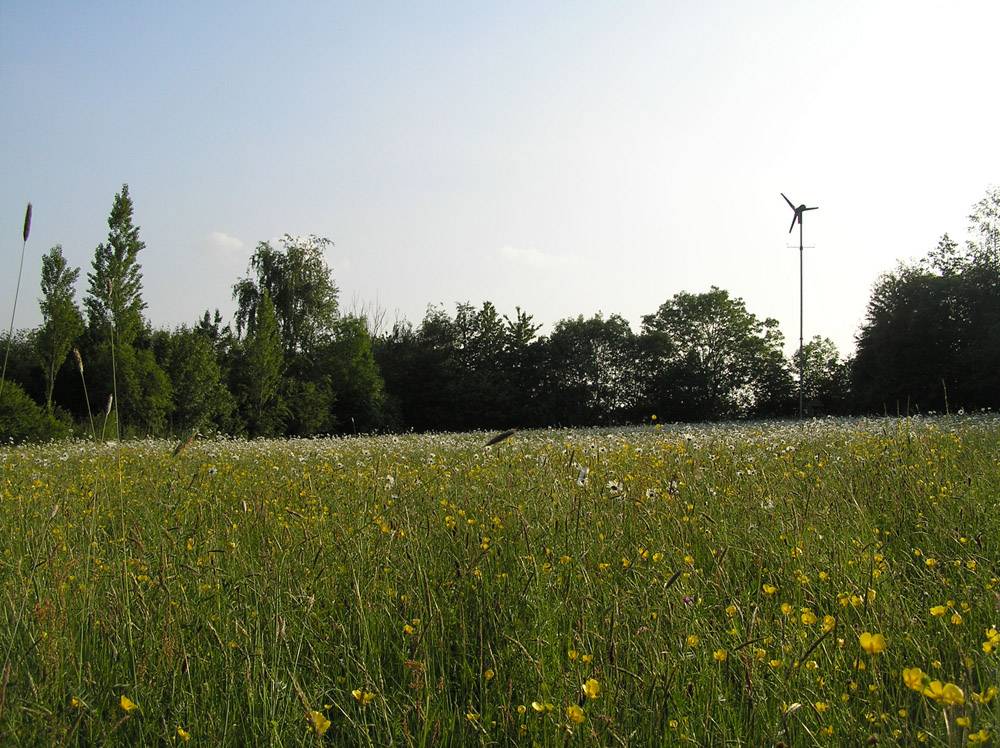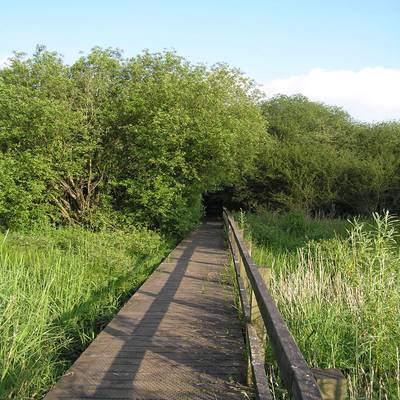The Humber Marsh nature reserve
Before we relocated to our new premises at Upper Hill for many years Wind & Sun's Headquarters had been based at Humber Marsh, a 13 acre private wetland nature reserve which we own and manage.
Unfortunately, the reserve is not open to the general public, but can be visited by special arrangement.
The Buildings
These incorporate office areas, a mechanical workshop, warehousing, electronics service workshop, showroom area and two classrooms for training and visitor reception.
The main building itself has been constructed using green building techniques. In order to keep heating requirements to a minimum it incorporates a high degree of thermal mass wrapped in Warmcell recycled paper insulation with large south facing windows to maximise passive solar gains. The upstairs office incorporates green oak cruck frames to create a wonderful open space.
Powering Humber Marsh
The site is powered by its own wind and PV generation.
Humber Marsh has four discrete solar arrays installed at our premises and a 2.5kW Proven wind turbine. Each system is grid connected by their own SMA inverter.
Storage System
An energy storage system is included to maximise 'self consumption' from our on-site generation and to provide back-up power for our offices during grid power cuts.
This incorporates a Sunny Island 8.0H inverter, 48V 1150Ah Rolls AGM battery (giving ~ 27kWh of useable storage).
The Reserve
In order to minimize disturbance to both the marsh and wildlife the land is made accessible by a network of purpose built walkways and paths linking together the different habitat features and hides. This allows the majority of the land area to be left 'fallow' so wildlife is undisturbed.
The reserve is a valuable oasis in a highly cultivated agricultural area which is taken advantage of by wildlife and wild flora in many shapes and forms. There are several distinct habitat areas at Humber Marsh, the most extensive being the marsh itself.
There are ponds, some of which are linked by a waterway; a disused railway embankment, which has been colonised with woodland and grassland species; different types of hedgerow; some young woodland and a wildflower meadow.
Unfortunately, the reserve is not open to the general public, but can be visited by special arrangement.


